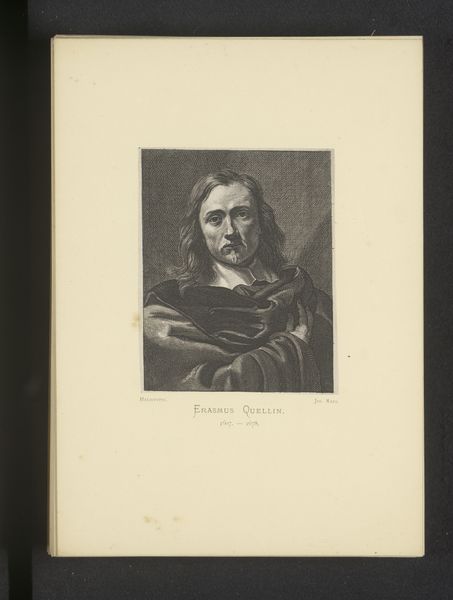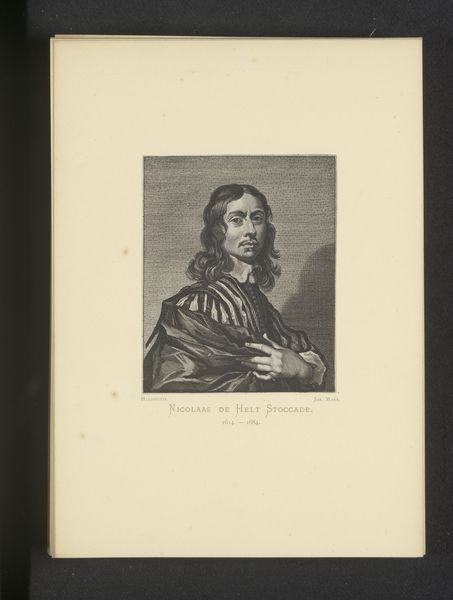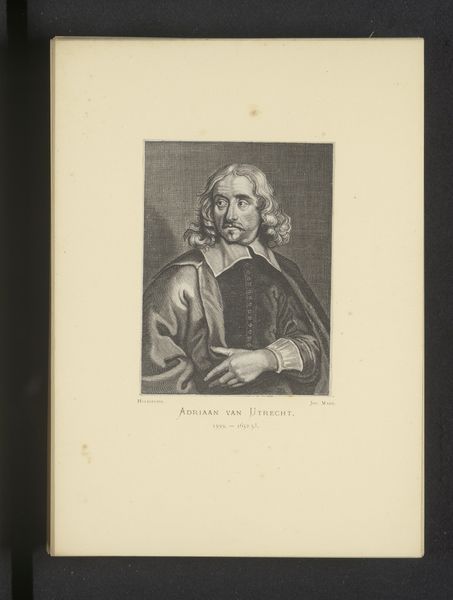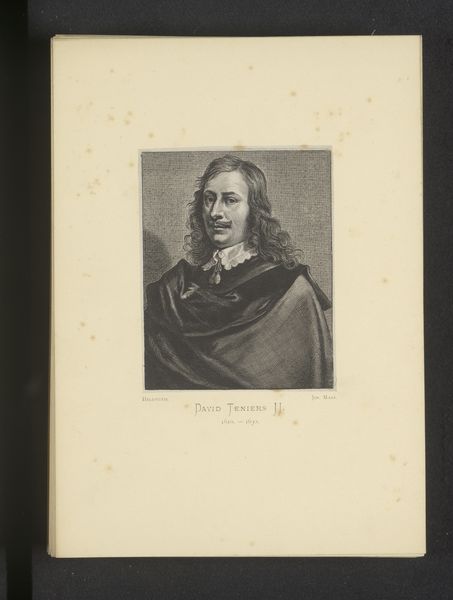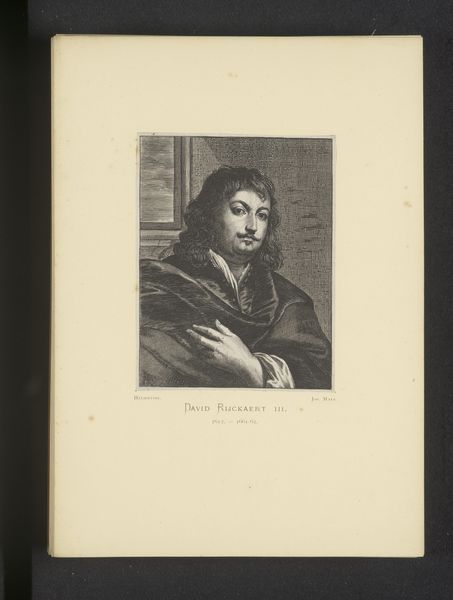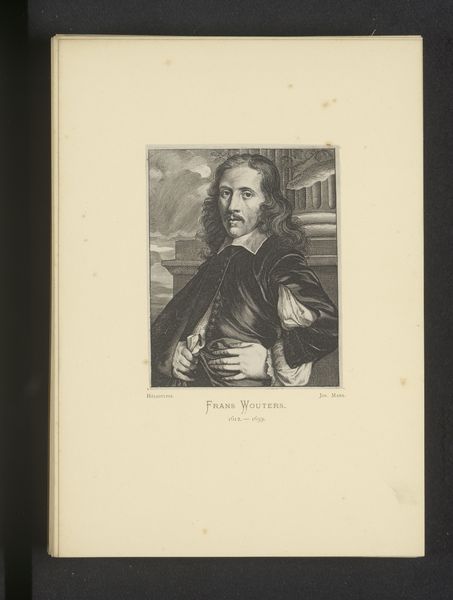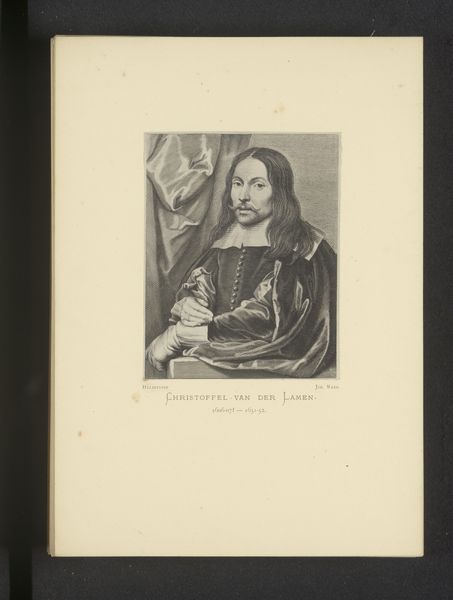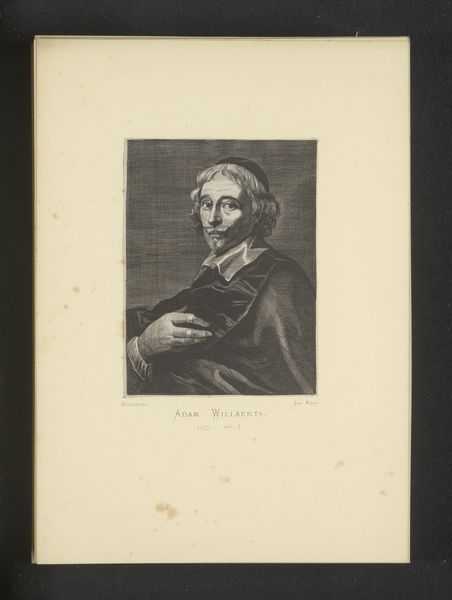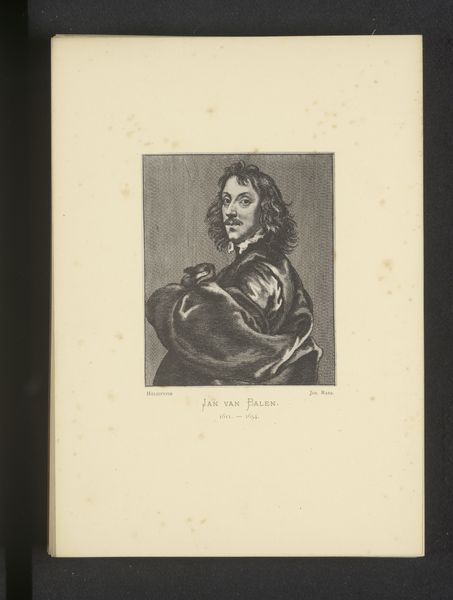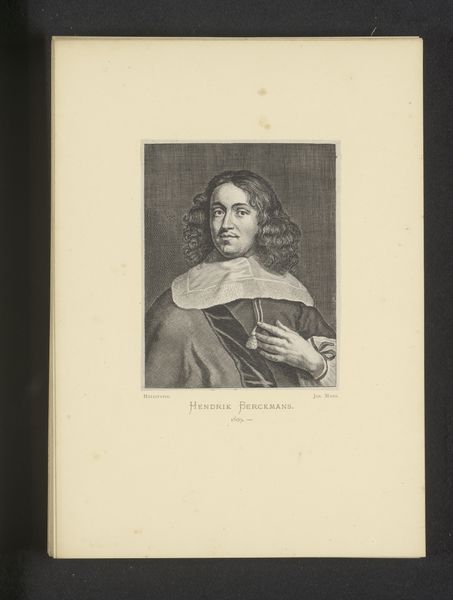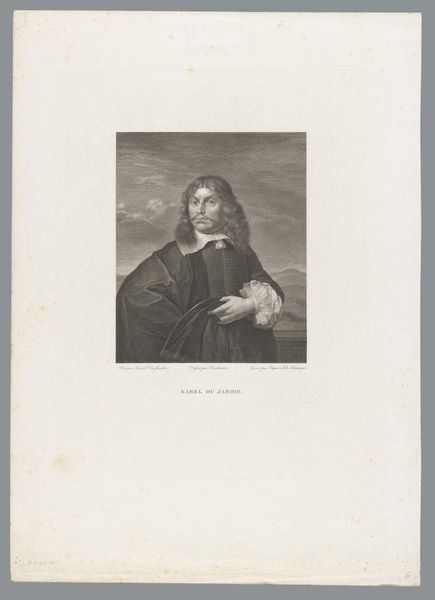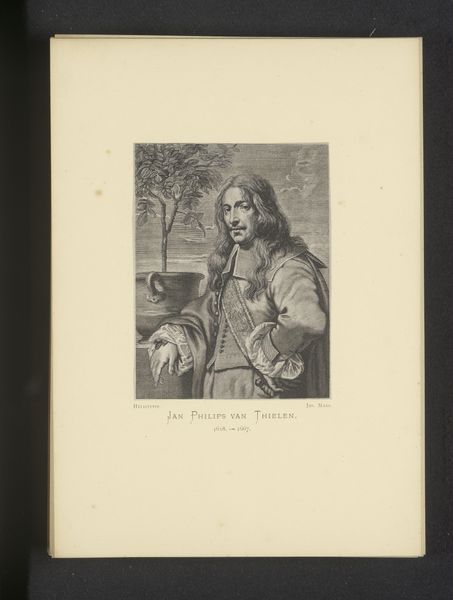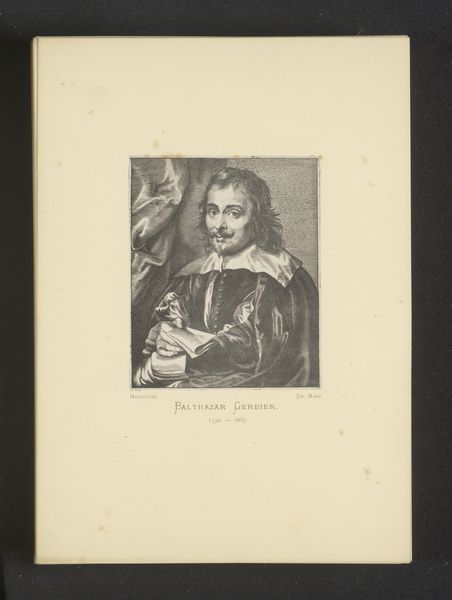
Reproductie van een gravure van een portret van Gonzales Coques door Paulus Pontius before 1877
0:00
0:00
Dimensions: height 114 mm, width 92 mm
Copyright: Rijks Museum: Open Domain
Editor: Here we have a reproduction engraving of a portrait of Gonzales Coques by Paulus Pontius. It seems to have been produced before 1877, though we don't have an exact date. I’m immediately drawn to the detail in the rendering of his hair, and how it contrasts with what looks like a simple dark background. What’s your read on this, looking at it through a historical and social lens? Curator: I see this print as more than just a portrait; it's a glimpse into the social construction of masculinity in the Baroque era, filtered through the lens of reproduction. Consider Coques – a successful artist, yet here he’s presented through someone else’s interpretation, highlighting a power dynamic inherent in portraiture itself. Notice the careful attention to his clothing and adornments. What does that communicate to you about his identity and status? Editor: I guess it shows how concerned they were with appearances, portraying him in a way that reinforces his importance in society, but through a very particular visual language of class. Curator: Precisely! Now think about the reproductive nature of this engraving. It democratizes access to his image but also inherently changes the aura of the original portrait. How does that tension play into our understanding of fame, representation, and the male gaze in a patriarchal society? Does this secondary interpretation allow a viewer to read additional social layers of that original gaze and subject? Editor: It's almost like seeing it twice-removed, adding another layer of analysis and further removing Gonzales Coques from his original identity through each medium. It definitely encourages a different kind of interpretation than simply viewing the original painting. Curator: Exactly. So we start thinking not just about the individual portrayed, but about the social mechanisms at play in creating and disseminating his image, revealing so much about class and gender. Editor: That gives me a lot to think about regarding power dynamics and artistic agency! Thanks for your insight. Curator: It’s fascinating to consider the print not only as art, but also as a social artifact that allows us to understand both the original sitter and period of interpretation.
Comments
No comments
Be the first to comment and join the conversation on the ultimate creative platform.
